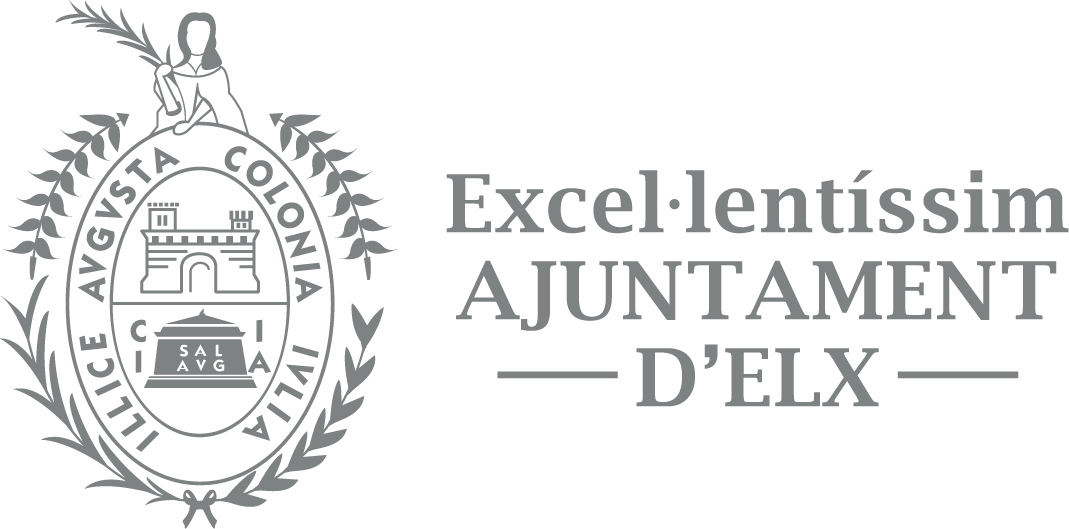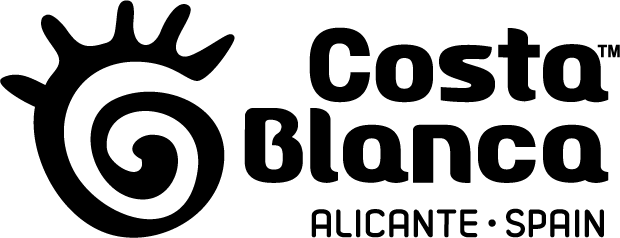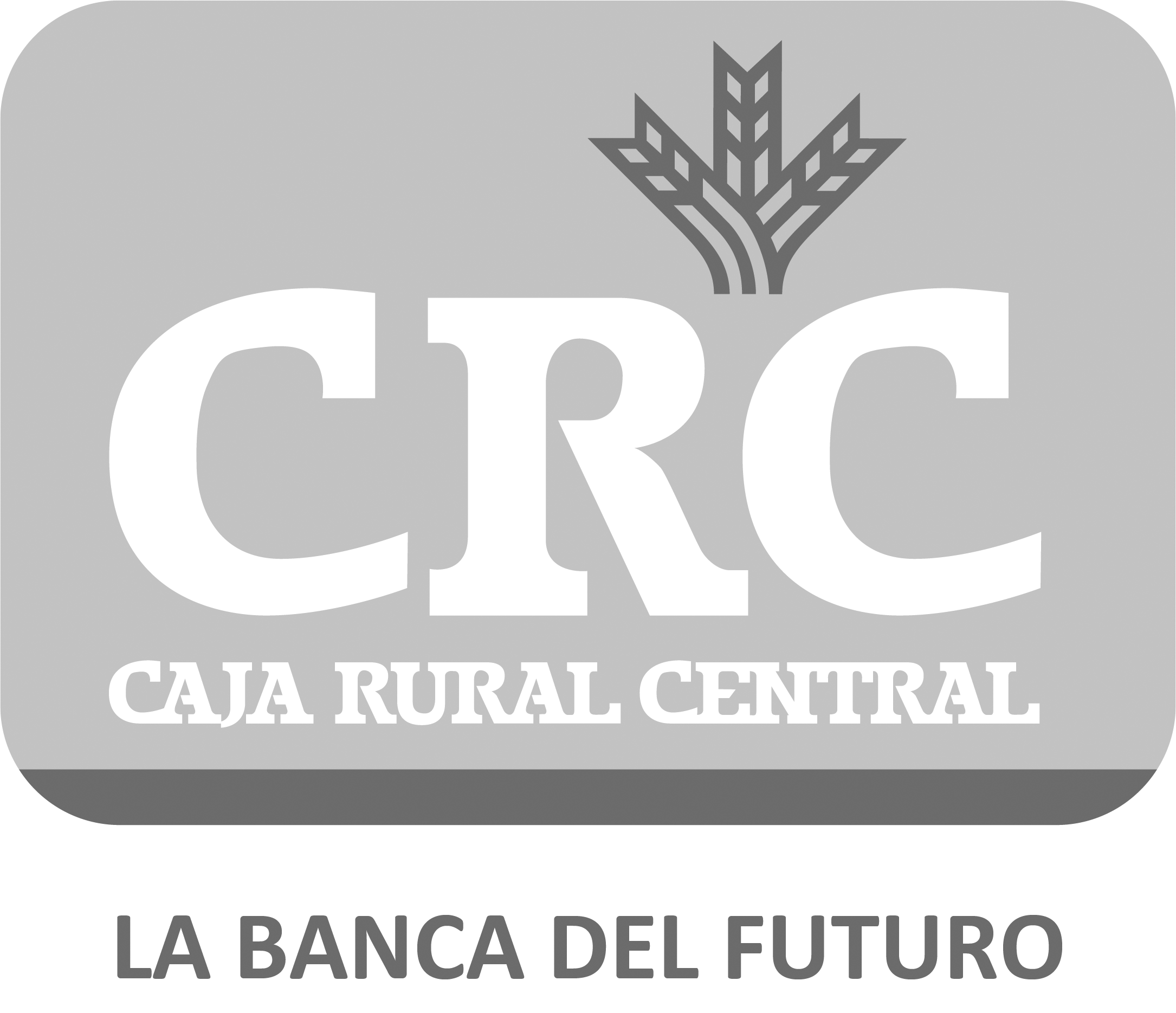Guía de la representación
So that you can follow and enjoy the Misteri d'Elx in all its extension, we recommend that you download the representation guide.
Second Act La Festa
The second act of the Mystery of Elche also begins with the singing of the Vísperas of the Assumption of Mary. In the same way as at the beginning of the first act, the actors depart again in the procession from the hermitage of Saint Sebastian which take them to the door of the basilica of Saint Mary. The priest and the three Caballeros enter along the andador. They kiss the feet of the image of the Virgin, whose funeral bier is situated on the right hand side of the stage, and then tey take their seats. Behind them, the apostles enter and venerate the image of the Virgin too and arrange themselves around her. In this second act, Saint Peter has replaced his robe with an alb, stole and a white cope. During the time between La Vespra and La Festa, a great square pit enclosed by a balaustrade has been opened up in the centre of the stage, representing the tomb, ready to receive the body of the Mother of Christ. For their part, Mary Salome, Mary Jacobi and the angels of the Virgin’s entourage stop at the beginning of the andador, beside the main door of the church. Then three of the apostles sing a strophe, in which they decide to approach the place where the Virgin’s entourage is waiting and invite them to her burial:
Par-nos, germans, devem anar
a les Maries pregar
devotament vullen venir
per a la Verge sepelir.
It seems, brethren, that we should go
to ask the Maries
if they will come devoutly
to bury the Virgin.
Then four apostles go down to the beginning of the gangway and, addressing to the Maries and angels, sing the following invitation:
A vosaltres venim pregar
que ensems anem a soterrar
la Mare de Déu gloriós,
puix tant de bé ha fet per nós.
We come to ask you
to go together to bury
the Mother of the glorious God,
since she has done so much good for us.
E anem tots
ab amor i alegria,
per amor del Redemptor
e de la Verge Maria.
And le tus all go
with love and joy,
for the love of the Redeemer
and of the Virgin Mary.
To these words the entourage replies:
Vosaltres siau ben vinguts,
parents e amics de grans virtuts.
Promptes som per a anar
a la Verge soterrar.
You are welcome
family and friends of great virtue
We are ready to go
to bury the Virgin.
When the answer has been given in the affirmative, all move together up to the cadafal. On their arrival, the little actors of the Virgin’s entourage kiss the feet of the image and immediately afterwards move towards the seats assigned to them which, in this second act, are place on the left side of the stage.
Saint Peter then collects the palm which was laido n the body of the Virgin and singing to Saint John, asks him to carry it in the front of the body of Mary:
Preneu vós, Joan, la palma preciosa
e portau-la davant lo cos glorificat
car així ho dix la Verge gloriosa
ans que als cels se n'hagués pujat.
John, take the precios palm
and bring it in front of the glorified body,
since the glorious Virgin said to do so
before she went to heaven.
Saint John recognizing the power of Peter, power bequeathed by Christ himself, accepts the charge:
De grat prenderé la palma preciosa
a compliré lo que haveu manat,
puix que haveu potestat copiosa
de condemnar e delir tot pecat.
I will willingly take the precios palm
and I will fulfil what you have ordered
since you have extensive power
to condemn and to wipe out all sin.
As in the first act, the transferral of the golden palm involves the ceremony of kissing it and lightly palcing i ton the forehead, both in giving and receiving it. Then all the apostles kneel around Mary’s bier and start singing verses of praise in preparation for her burial:
Flor de virginal bellesa,
temple d'humilitat,
on la Santa Trinitat
fon enclosa e contesa.
Flower of virginal beauty,
temple of humilty,
where the Holy Trinity
was enclosed and held captive.
Pregam-vos, cos molt sagrat,
que de nostra parentat
vos acord tota vegada
quan sereu als cels pujada.
We pary you, most sacred body,
that our relationship
you constantly remember
whwn you are ascended to heaven.
When the chant is finished, everyone rises and begins to sing Psalm 114, In exitu Israel d’Egipto, customary in funeral rites. A large group of Jews, however, appears at the main door of the church, attracted by the canticles and led by the Chief Rabbi who stands out at their head. Whereas the majority of them stop at the beginning of the andador, two of them start going along the gangway with the intention of observing the origin of the music. Both Jews appear to speak together and to be surprised at such unusual chanting. They make gestures which indicate amazement. Suddenly, one of the two approaches the cadafal and discovers a group of apostles singing around the Virgin. Quickly, he calls his companion and both of them confirm the discovery. After a short run along the andador towards the large crowd of infidels, they explain, with gestures, all that they have just seen. The Jews get angry, talk among themselves, become more enraged, and decide to attack the group of Christ’s apostles, to steal the body of Mary and to destroy it afterwards. In this way they want to avoid the apostles saying, after the burial of the Virgin, that she has resuscitated, as they did with Jesus. At a certain moment, the chanting of the apostles ‘psalm is interrupted by the angry voice of the Chief Rabbbi, backed up by the rest of the Jews who show their hostile intentions, going along the andador in a threatening attitude:
Aquesta gran novetat
nos procura deshonor;
anem tots a pas cuitat,
no comportem tal error.
This great piece of news
procures dishonour for us;
let us all go with swift steps,
not to permit such an error.
No és nostra voluntat
que esta dona soterreu,
ans de tota pietat
vos manam que ens la deixeu.
It is no tour will
that you bury this woman;
firstly, with all reverence
we order you to give her to us.
E si açò no fareu,
nosaltres cert vos direm
que us manam en quant podem,
per Adonai que ens la deixeu.
And if you do not,
we will surely say to you
that we order you, as we can
By Adonai, give her to us.
The surprised apostles crowd around the bier of the Mother of God while they try to see what is happening outside the stage. The Jews who acted as explorers stand out from the rest and go on ahead. The disciples, realizing their intentions, decide to go to stop them. First, Saint John and Saint Peter go down. The former, raising the palm, tries to stop a Jew who is approaching and Saint Peter behaves in the same way. They push and simulate a hand-to-hand fight, while the rest of the disciples place themselves in front of the bier to avoid its being desecrated. The large number of Jews who struggle forward, however, make the apostles move backwards on the cadafal while the singing continues. In spite of the intense opposition of the followers of Christ, the first Jew manages finally to arrive on the stage, to break the barrier and to approach Mary’s bier. Just as he is about to seize the body of the Virgin, he is left paralyzed, with his hands stiff. His companions, as they arrive on the stage and witness this miracle, fall on their knees, repenting the action. They sing a chant in which they beg for help:
Oh, Déu Adonai
qui formis natura,
ajuda'ns Sabdai
saviesa pura!
Oh God Adonai
who created nature,
help us, Sabdai,
wisdom pure!
Som nós penedits
de tot nostre cor.
Pregam-te, Senyor,
no vulles guarir.
We are repentant
with all our hearts.
We beg you, Lord,
to cure us, if you will.
Tal miracle mai
no féu creatura.
Ajudan'ns, sant Pere,
qui tens la procura!
Such a miracle was never
accomplished by any created thing.
Help us, Saint Peter,
you who have the power!
The disciples of Jesus, recognising the sincerity of the Jews’ repentance, ask them to show their faith in the virginity of Mary in order that they may be forgiven:
Prohomens jueus. si tots creeu
que la Mare del Fill de Déu
tostemps fon verge, sens dubtar,
ans e aprés d'infantar.
Leaders of the Jews, if all of you believe
that the Mother of the Son of God
was a virgin at all times, without doubt,
before and after giving birth.
Pura fon e sens pecat
la Mare de Déu glorificat,
advocada dels pecadors.
creent açò guarireu tots.
That she was pure, without sin,
the Mother of the glorified God,
advocate of the sinners
believing in that, you will all be cured.
The Jews, who continue kneeling without moving, ask for help from the apostles whom they implore to baptise them, demonstrating their, firm belief in Mary as the Mother of God:
Nosaltres tots creem
que és la Mare del Fill de Déu.
Batejau-nos tots en breu.
que en tal fe viure volem.
We all believe
that she is the Mother of the Son of God.
Briefly baptise all of us,
who want to live in such faith.
Saint Peter baptises the infidels touching their heads with the golden palm. At this moment they are miraculously cured and the Jew who was left with his hands stiff next to the bier manages to move them, and falls immediately to kiss his knees. They joy of the Jews is transformed into song:
Cantem, senyors!
Que cantarem?
Ab clamors, façam gracies i llaors
a la humil Mare de Déu.
Let us sing, sirs!
What shall we sing?
Let us give thanks and praises with shouting
to the humble Mother of God.
A ella devem servir
tot lo temps de nostra vida,
puix sa bondat infinida
nos vullgué així guarir.
We ought to serve her
all the days of our life,
since her infinitive kindness
whished to cure us thus.
Doncs cantem tots,
tots la lloem!
Ab clamors, façam gràcies i llaors
a la humil Mare de Déu.
Then, let us all sing,
we all praise her!
So let us give thanks and praises with shouting
to the humble Mother of God.
When the infidels are cured of their affliction, they stand up, moving their hands to show that they are healed. Apostles and Jews together get ready to perform the burial of Mary. In this scene a little procession is developed around the cadafal. The movement of the procession, solemn despite the narrowness of the stage, starts with the cross raised, carried by one of the Jews. Groups of apostles and Jews follow. Behind them, the processional bier with the body fo the Virgin is carried, under a canopy, by the actors themselves. Saint Peter, who acts as priest, the two Maries and the angels of the entourage come last. The funeral procession makes a complete circuit of the stage during whci Psalm 114 is sung:
In exitu Israel d'Egipto
Domus ]acob de populo barbaro,
Facta est Judea sanctificatio eius,
Israel potestas eius.
When Israel went out of Egypt,
the house of Jacob from a strange people,
He made Judah his sanctuary,
and Israel his dominion.
Mare vidit, et fugit:
Jordanis conversus est retrorsum.
Montes exsultaverunt ut arietes:
et colles sicut agni ovium.
The sea saw him and escaped:
the Jordan flowed backwards.
The mountains jumped like goats:
and the hills like lambs.
When the circuit of the cadafal has been completed, the bier with the image of the Virgin is returned to its former place and all the characters sing a beautiful chant in her veneration:
Ans d'entrar en sepultura
aquest cos glorificat
de la Verge santa i pura,
adorem-lo de bon grat.
Before it enters the tomb,
this glorified body
of the saintly and pure Virgin,
let us adore willingly.
Contemplant la tal figura,
ab contricció i dolor,
de la Verge santa i pura
en servei del Creador.
Looking at such an image
with contrition and sorrow,
of the saintly and pure Virgin,
in service of the creator.
Respectant la tal figura,
ser de tanta majestat,
de la Verge santa i pura,
adorem-lo de bon grat.
Offering respect to such a figure,
of such great majesty,
of the saintly and pure Virgin,
willingly let us adore her.
Immediately afterwards, the image of the Virgin is lifted in the arms of the apostles from the processional bier and placed in front of her simulated tomb, as referred to above, in the centre of the stage. The figure is placed on a beautiful embroidered canvas and her head, reclining on cushions, is rested on the balustrade of the sepulcher. Saint Peter, kneeling in front of her, censes three times following customary funeral practice. The apostles and Jews, standing around, sing In exitu Israel d’Egipto once again. When the ceremony is finished, the body of Mary is lowered into the sepulcher in the canvas. And at that precise moment the organ plays to announce that the doors of heaven have been opened and the araceli has started descending. As in La Vespra, four angels play guitars and harp and the Àngel Major carries the soul of the Virgin in his hands. The beautiful singing of the angelic choir fills the church with the promise of resurrection:
Llevantau's, Reina excel·lent,
Mare de Déu omnipotent.
Veniu, sereu coronada
en la celestial morada.
Rise up, excellent Queen,
Mother of omnipotent God.
Come up and you will be crowned
in the celestial dwelling-place.
Alegrau's que hui veureu
de qui sou Esposa e Mare
e també veureu lo Pare
del car Fill i etern Déu.
Be happy, because today you will see
he of whom you are Wife and Mother,
also you will see the Father
of the dear Son and eternal God.
Allí estareu sens tristor
on pregareu per lo pecador
e reinareu eternament,
contemplant Déu onmipotent. (9)
There you will be without sorrow,
where you will pray for the sinner,
and you will reign eternally,
contemplating omnipotent God.
(9) In present day performances, only the first quatrain of this chant is sung
As soon as the araceli arrives at the cadafal, it goes into the interior through the same opening or trap-door that was used to bury the body of Mary. Moreover, in precisely the same place, under this trap-door, a pit has been dug out in the church, allowing the aerial machine to be able to go under the stage completely. Throughout the rest of the year, this pit is covered with boards and can be observed at the entrance to the presbytery of Saint Mary’s. Once the araceli is hidden from the public view, the substitution on the celestial device of the Virgin’s image for the Àngel Major takes place. She is cared for and adorned by her attendants, and secured tightly on to the apparatus. After that, the recélica starts ascending to heaven. The image of Mary, with her gown spread out, and now without the death mask which simulated her death, appears as if resuscitated. Thus is reflected mimetically, the reunion of the soul, which descends from heaven, with the body which had been buried in the ground; that is the Assumption of the Mother of Christ in body and soul.
The ascent of the araceli, with its angels singing the same canticle as in their descent, is held up mid way, suspended between heaven and the cadafal. AT that moment the two Caballeros Electos who, a few minutes ago, had gone out to find the remaining apostle, Saint Thomas, return to the church. According to tradition he was preaching in India. He makes gestures of astonishment, since, like his apostle companions, he does not understand the reason for such a long mysterious journey. Suddenly, after moving forward a few metres along the central gangway, understands that it must be Mary’s:
Oh, bé és fort desaventura
de mi trist, desaconsolat,
que no em sia ací trobat
en esta santa sepultura!
Oh, what a great misfortune
for me, sad and disconsolate,
not no be present here
at this holy tomb!
He moves forward a few steps an stops amazed, almost frightened, when he discovers high up, suspended in the air, the Virgin, surrounded by angels. It is at this moment that he addresses his Mother to ask her forgiveness for his delay:
Prec-vos, Verge excel·lent,
Mare de Déu omnipotent.
Vós m'hajau per excusat
que les Índies m'han ocupat.
I ask you, excellent Virgin,
Mother of omnipotent God.
that you excuse me
that the Indies have occupied me.
Saint Thomas falls on his knees once he has finished his moving chant. Heaven opens its doors and, with soft music from the organ, the coronació, a little aerial device of similar structure to the araceli but of smaller dimensions, begins to descend. It is formed of a kind of central seat, occupied by the Eternal Father, and on either side of him, kneeling on ledges, two boys who represent the other two persons of the Holy Trinity. God the Father is the third of the characters in the Mystery who has to be played by a priest. Slowly the Trinity approaches the araceli, while its occupants sing the following chant:
Vós siau ben arribada
a reinar eternalment,
on tantost, de continent,
per Nós sereu coronada.
You are welcome
to reign eternally,
in a place where now, straight away,
you will be crowned by Us.
As the Eternal Father sings the final part of this canticle, he lets go of the golden imperial crown which he holds in his hands, tied on a string. Little by little it descends the few metres which separate both machines. At the same time golden rain from heaven engulfs the characters and, finally, the crown is placed on Mary’s head.
That moment is inexpressible. The crowd who fill the church burst out in applause and cheering. All the bells of the church, outside and inside peal. A salvo of fireworks is displayed on the roof-terraces of Saint Mary’s. The organ, with all its stops opened, plays a tutti. ‘Long live the Mother of God!’ is shouted aloud by actors and spectators alike. This is La Festa’s climax, the high-point of the Mystery. The Virgin, patroness of Elche, has been crowned as Queen of all creation in the presence of all the people.
The oldest of the extant known texts of the Mystery, dated at 1625, indicates that the chant of the Holy Trinity was corrected by Comes, Licenciado, and music master of the Palacio Real. It seems, however, that the correction, which follows, was never performed, and, for that reason, this second lyric is not sung nowadays.
Veniu, Mare excel·lent,
puix que virtut vos abona,
ab esta imperial corona
reinareu eternalment.
Come, excellent Mother,
since you are all virtue,
with this imperial crown
you will reign eternally.
While the Coronation of Mary is taking place, the apostles and Jews on the cadafal observe the moving scene. They understand that the Virgin is not in the tomb which they surround because she has been resuscitated and is going, crowned, far up into heaven. For that reason, they lift their hands on high, and join in the action, receiving the profuse golden rain of tinsel paper which fills the stage and its surroundings. Saint Thomas walks the remaining steps to arrive on stage, where he greets and embraces Saint Peter and Saint John. The latter strips the leaves off the golden palm and descending from the stage makes his way among the people with difficulty. He climbs up to the platforms which have been raised on the sides of the church for official guests, and gives the leaves of this palm to the city’s mayor and to the president of the Patronato del Misteri. (This action doesn’t take place during dress rehearsals).
When the Holy Trinity arrives at the dome, the araceli starts ascending. The applause continues without abatement. The sound of the organ fills the confines of the basilica. And as a culminating moment, through into heaven, the apostles and Jews sing a Gloria of thanksgiving:
Gloria Patri et Filio
et Spiritui Sancto.
Sicut erat in principio
et nunc et semper
et in saecula saeculorum.
Amen.
Glory be to the Father and Son
and to the Holy Spirit.
As it was in the beginning
is now, and ever shall be,
world without end.
Amen.
The araceli, with the image of the Virgin, is bidden farewell with loud applause. Them the actors leave in two files for the hermitage of Saint Sebastian. Bringing up the rear come Saint John, Saint James and Saint Peter, and, following them, the priest and, last of all, the three Caballeros. The Mystery play of Elche, La Festa d’Elx, is over.






















